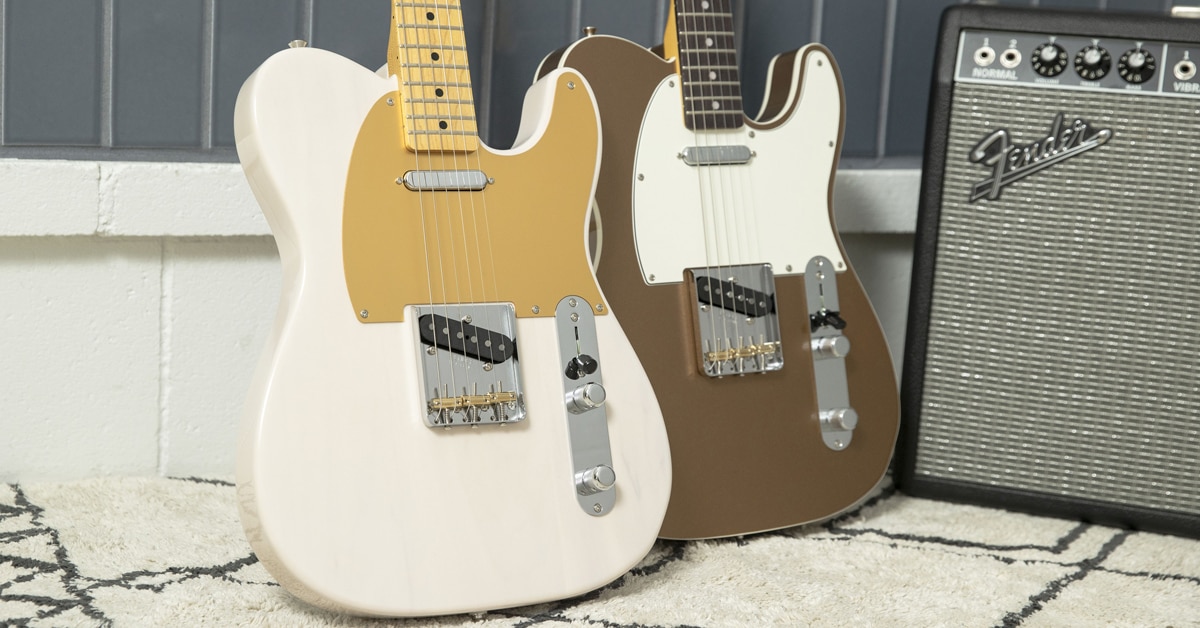When it comes to buying an electric guitar there are a lot of options available, and choosing one can be confusing. This guide will help you understand the basic differences in electric guitars so you can make an informed decision. And remember, we’re here to help with friendly Gear Heads who can guide you to the electric guitar that best meets your needs.
Table of Contents
Who Are You Buying For?
What is Your Budget?
How an Electric Guitar Works
Different Electric Guitar Body Types
Pickups and Electronics
Scale Length
Neck Construction
Tonewoods
Hardware
So, Which Electric Guitar Should You Choose?
Who Are You Buying For?
When buying a guitar for a beginner, it’s important to get a guitar that is properly sized, sounds great, and matches up with the budding player's musical tastes and aspirations. If you don't know, find out what kind of guitar they're lusting after and who their guitar heroes are.
Choosing an electric guitar that addresses these preferences helps guarantee that new players will stay motivated as they learn to play. Musician’s Friend offers a wide selection of ¾-scale, mini, and travel guitars that are ideal for smaller, younger players. Full-sized electric guitar bodies vary considerably in size and weight, and those factors should be considered.
For beginners, it’s important to have a guitar that is easy to play and stays in tune. But cosmetics, body style, electronics, and tone matter too. Often, a beginner may have a favorite guitarist who inspires them to play. Check out what guitars their heroes play and try to aim for something similar. Your budding country star may not be very enthusiastic about the pointy guitar with skulls, but they will probably fall in love with a classic. (Don't worry if some of these terms are unfamiliar—we'll address them below.) You may choose something different, but this is a good starting point in determining which guitar is likely to inspire your up-and-coming guitar prodigy.
For someone who’s been playing for a while, your options are a little different. Perhaps they’ve got a certain guitar in mind. If so, get them what they want! Chances are they’ve already done their homework and have their eye on their next guitar. If they’re not sure, you can still make an educated purchase. There are many popular options that should satisfy most experienced players. And there are many lesser-known models that can be the right fit for someone with more specific tastes.
Remember that when buying a guitar, quality usually comes with price tag to match. Consider paying a little more for the right guitar. Often, you can save money in the long run by purchasing a better guitar up front, skipping over the incremental upgrades along the way. A seasoned guitar player will often have a very good idea of what they like. With experience comes a desire to invest in quality. Musician’s Friend offers a stunning selection of Private Reserve Guitars. When gift shopping for a high-end guitar, it’s usually wise to forego the element of surprise and find out exactly what your giftee wants.
Reading reviews by fellow musicians as well as by the experts can help narrow your possibilities. You’ll find plenty of customer-written reviews for most of the electric guitar models we offer.
What Is Your Budget?
While you don’t have to mortgage your home to buy a good guitar, price will still be a key factor in deciding which guitar to purchase. When buying for a beginner—especially younger players—you may be hesitant to spend too much without knowing if the recipient will stick with the guitar. That’s perfectly reasonable. There are guitars to fit just about every budget. Just keep in mind that the better the guitar the new player starts with, the more likely they will be to continue learning and playing. An instrument that’s hard to play or won’t stay in tune will deter even the most enthusiastic beginner.
All new guitar players will need an amplifier and cable. Additional electric guitar accessories include:
Under $300
There are many options in this price range that will suit the beginning player. Musician’s Friend offers an extensive selection of Electric Guitar Value Packages that include an electric guitar, amplifier, and many of the accessories mentioned above. The components in these packages have been carefully chosen to work well together and can eliminate guesswork when choosing the right gear. Many also include instructional books, DVDs, and online beginner’s lessons, plus other resources to keep the new player motivated to keep learning.
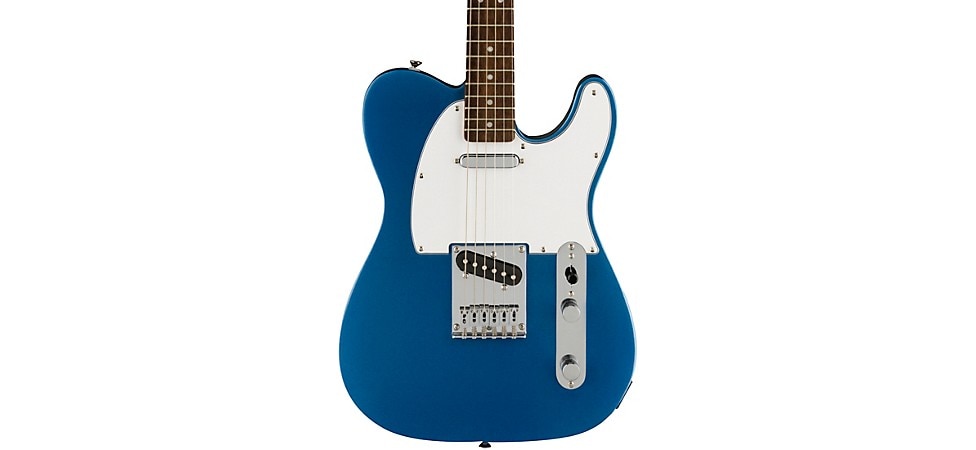
If you decide to choose a guitar, amplifier and accessories separately, consider spending more on the guitar than the amplifier. A better guitar will often suit a player’s needs longer, and a less expensive amp will be fine for early practicing sessions. If the player decides to upgrade down the road, often they may only need to upgrade the amplifier and not their entire setup.
$300 - $600
As you move up in price, you have more options available. It’s still advisable to spend more of your budget on the guitar than the amplifier, for the same reasons noted above.
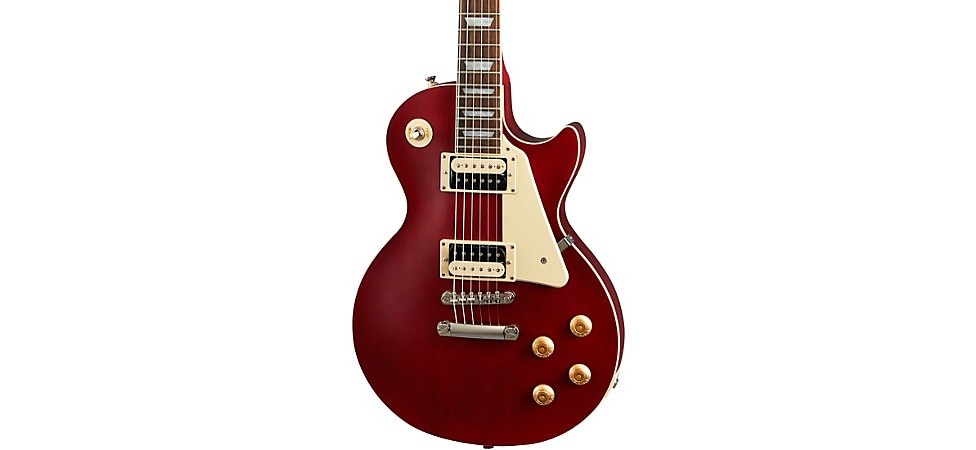
With more options, you can pick out something that’s going to suit the player better. Many models in this range are upgrades of less expensive models. The upgrades may take the form of better hardware, electronics, woods, cosmetics, and construction methods. We’ll address the impact of such upgrades below.
$1000 and up
In this range, you will find many premium options. Many guitars in this range will offer some of the best features available. Again, you will find many upgrades from less-expensive models. Often, these are considered the standard models. Of course, you certainly don’t have to spend $1000 to get a great guitar. However, most guitars of this caliber will satisfy even the most discerning player. Musician’s Friend’s Private Reserve collection includes instruments that cater to the most demanding professional guitarists’ requirements.
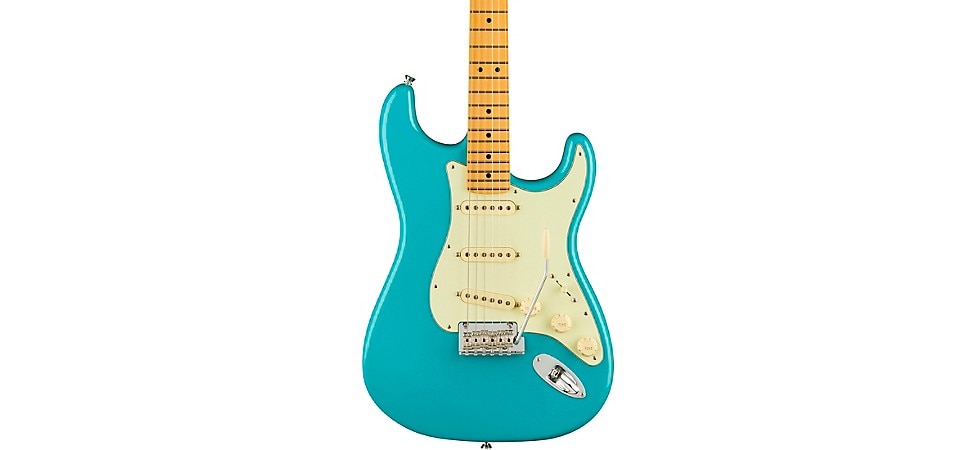
How An Electric Guitar Works
While styles and models may vary, electric guitars operate on the same general principles. The pickup mounted on the electric guitar’s body functions as a magnetic field. When a metal string is plucked and vibrates, it generates a current. That current is transmitted by the pickup through a preamp circuit with tone controls to the guitar cable, and in turn to the amplifier. The amplifier boosts the signal and modifies it with various tone controls and effects, depending on the amplifier's design and capabilities. The signal is then output to a speaker, which converts it to sound waves. The type of pickup(s), tone controls, strings, playing techniques, and other factors built into the guitar's design all influence the signal that is sent to the amplifier. In short, each component of the guitar affects how the guitar sounds.
Electric Guitar Body Types
There are three basic types of electric guitar body styles, each with its own characteristics: the solid body, the hollow body and the semi-hollow body.
Solid Body
The solid body electric guitar is the most common body type and is made from a solid slab of wood. Solid body guitars can range from a simple, single-pickup model, to an ornately figured and decorated, multi-pickup instrument with a slew of electronic options. Although solid-body guitars don’t produce as much resonance as hollow-body models, the woods used still have an impact on the instrument’s sound.
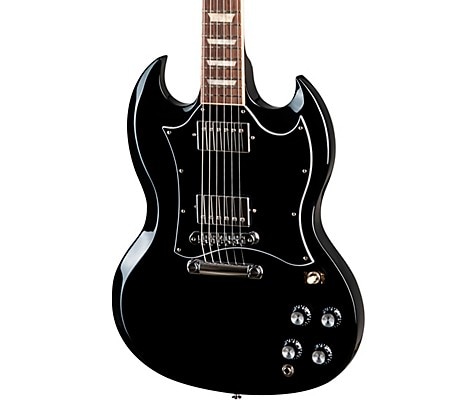
Hollow Body
As the name suggests, these electric guitars have bodies that are hollow—much like an acoustic guitar—and produce more resonance due to their design. These guitars usually feature an archtop, and are more prone to feedback. Many jazz guitarists prefer the hollow body for its full, rich tones, and deep bass response.
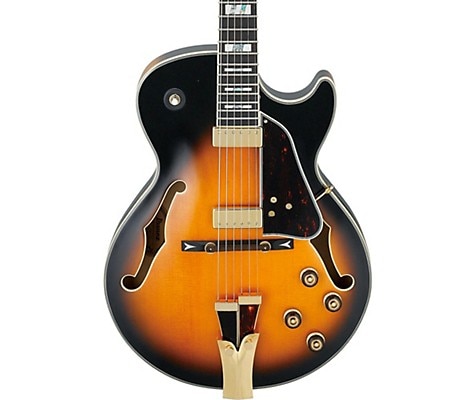
Semi-Hollow Body
Similar to the hollow body, the semi-hollow body has more resonance than a solid body. However, semi-hollow guitars are designed with a solid center wood block that adds stability and sustain, and helps cut down on feedback. Many blues players like the warmth of the semi-hollow and the increased attack and sustain offered by the center block. Semi-hollow guitars can be great for a wide variety of music - from blues and jazz to punk rock.
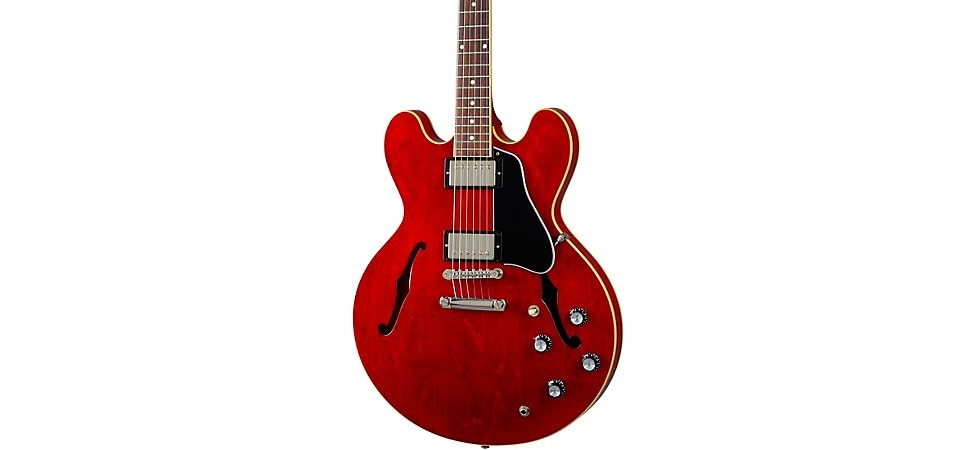
Pickups and Electronics
Aside from the body style, the pickups and electronics have the greatest effect on the way a guitar sounds.
The most basic, original pickup design is a single-coil pickup. It’s composed of a single magnet with fine wire wrapped around it, creating a magnetic field that captures the strings’ vibrations converting them into an electronic signal. Single-coil pickups tend to be bright and crisp sounding. The tone they produce cuts through dense band sounds well, but they are also prone to generating hum and are subject to magnetic interference. Many great artists play guitars equipped with single-coil pickups. Eric Clapton, Stevie Ray Vaughan, John Mayer, Merle Travis and many others are famous for their use of single-coil tone.
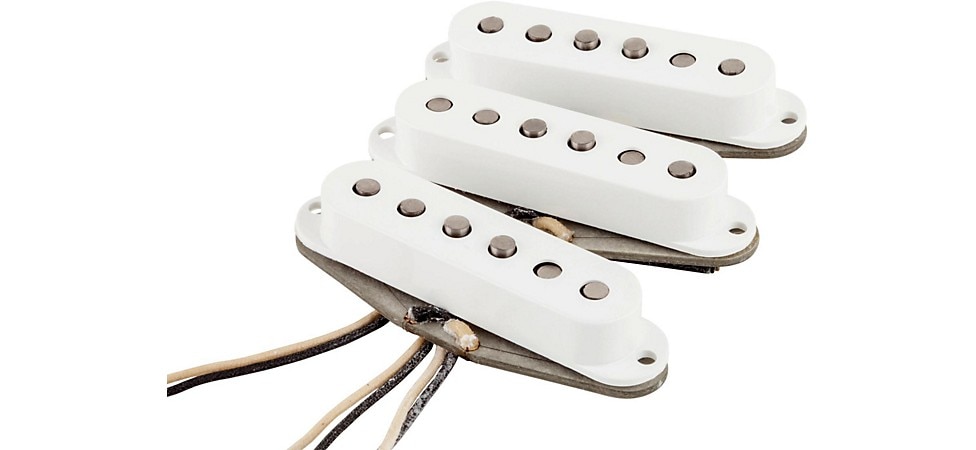
Humbucker pickups were designed to deal with hum while also offering tonal characteristics beyond those of single-coil models. This design incorporates two single-coils wound together in series, with the polarity of the magnets arranged opposite each other. This design helps to eliminate hum. Hence it’s name. Humbuckers usually have a thicker, louder, more powerful tone when compared to single-coils. While they are very versatile, humbuckers lend themselves to rock, heavy metal, and jazz styles. Famous guitarists who use humbuckers include Slash, Jimmy Page, Joe Pass, and Duane Allman.
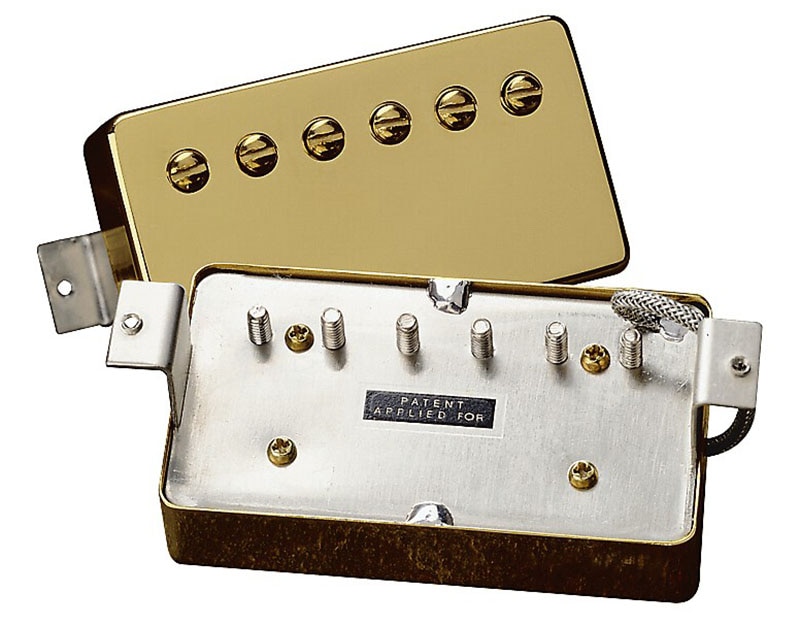
Not nearly as popular as single-coils and humbuckers, piezo pickups can be found on electric guitars as well. These crystalline sensors are usually embedded in the saddle of an electric guitar. Piezo sensors operate on mechanical vibration as opposed to magnets to convert sound from vibrating strings into an electric current. Piezo pickups can be used to trigger synthesizer or digital sounds much like an electronic keyboard. Most often, piezo pickups on an electric guitar are used to simulate an acoustic guitar tone. Piezo-equipped guitars often also include magnetic pickups to expand their tonal versatility.
Active Pickups and Electronics
Some guitars are equipped with active pickups that require batteries as an energy source and incorporate a preamp for sound-shaping. Active electronics may also include filters and equalization circuits for added sound control. Guitars with active electronics generally have a higher output than magnetic pickups and produce cleaner, clearer sound. Most guitar pickups are passive.
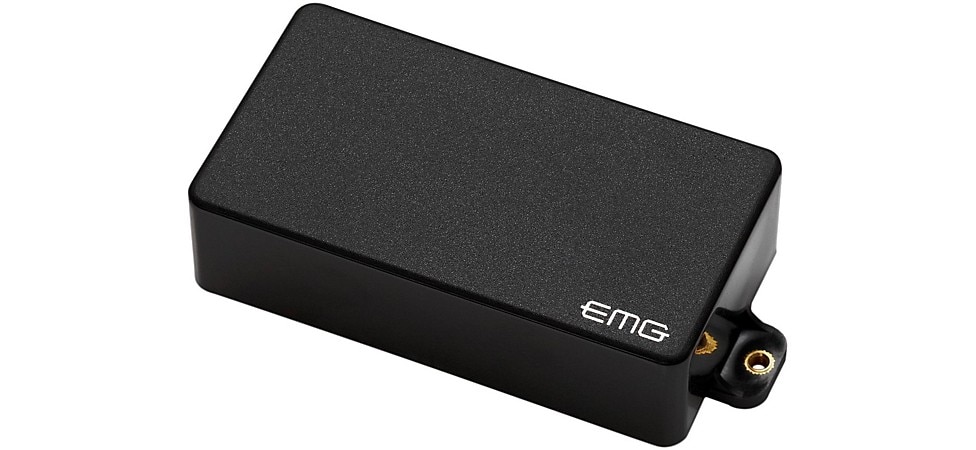
Pickup Switching and Other Controls
Most electric guitars feature multiple pickups. Some will have two or three single-coils. Some will have two or three humbuckers. Many offer a combination of single-coil and humbucker pickups. This combination offers the player a wide range of tonal options. Pickup configurations are often abbreviated by referring to single-coils with an "S" and humbuckers with an "H." The placement of each pickup is indicated from the neck down towards the bridge. Thus an SSH configuration has single-coils at the neck and middle positions and a humbucker at the bridge.
The placement of pickups on the guitar's body has a significant influence on the tone they generate. Pickups located near the bridge sample the strings where they have the least overall motion. The result is accentuated treble sounds or "bite." Pickups located nearer the center of the strings—closer to the neck of the guitar—produce a tone characterized by more midrange and bass sounds.
Guitars with multiple pickups have controls allowing the player to access each pickup individually as well as combinations of two or more pickups simultaneously. These controls may be rotary knobs, blade selectors, or toggle switches that allow the guitarist to quickly access various pickup combinations during performance.
In addition to pickup selection, most guitars will have controls for volume and tone. Volume controls simply regulate the strength of the output signal. Depending on the amplifier, this can control the tone as well as the volume. Most tone knobs control high frequencies and many guitars have separate tone controls for each pickup. This can vary a guitar’s sound between soft, warm, and mellow to a very bright, raw, distorted sound.
Other switching options found on select guitars can control phasing between pickups for unique effects, eliminate one coil of a humbucker, or toggle the output on and off.
Some newer guitars have digital technology built in to allow a user to access a variety of sounds, including acoustic, 12-string, and resonator guitar tones; violins, piano, and many other sounds traditional electric guitars can’t produce. Other options include emulating alternate tunings without actually adjusting the tension on the strings.
Scale Length
Scale length refers to the length of the string that vibrates, and is measured from nut to bridge.
A longer scale length usually offers a tighter feel in string tension, with a brighter shimmer and well-defined low end. A shorter scale length offers less tension, which facilitates easier string bending. It also can make it easier to play for smaller hands. A shorter scale offers a generally warmer tone.
Most Fender guitars (and others of similar design) use a 25.5 inch scale length. Most Gibson guitars (and others of similar design) use 24.75 inch scale length.
Additionally, most PRS guitars use a 25 inch scale length. This design is intended to capture a blend of the warmer tones and ease of play of a short scale length, as well as the brighter tone and tighter playability of a longer scale length.
Neck Construction
The neck, which extends from the guitar body, includes the fretboard and headstock on which the tuners are mounted. It contains a metal truss rod that prevents neck bowing and twisting, and can be adjusted to help the guitar maintain consistent pitch. The fretboard is usually made from a thin layer of rosewood or ebony, although some models, usually with maple necks, have a fretboard made of the same wood as the neck. Most fretboards have position dots or other markers inlaid in the fretboard. Some models have markers on the upper edge of the fretboard offering the player easy visibility.
The neck's profile and width affects the guitar's playability and the player's comfort when fretting. While most necks are either "C"- or "U"-shaped, the width and depth of the neck in relation to the player's hand is an important consideration. Players with smaller hands should seek out narrower, shallower necks while those with larger hands will most likely find beefier neck profiles more comfortable.
There are 3 general types of neck construction:
- Bolt-on
- Set neck
- Neck-through
Bolt-on necks, as the term implies, are bolted onto the guitar body. This is usually a more cost-effective method of construction. It allows for easier replacement of the neck—whether for repairs or customization. This neck construction offers less overall sustain and resonance than set neck or neck-through guitars.

Set necks are set into the body of the guitar and glued in place, then fastened by clamping the neck to the body until the glue dries. Overall, this is a more stable neck joint, and gives better sustain and resonance to the guitar. Neck repairs are more difficult, however.
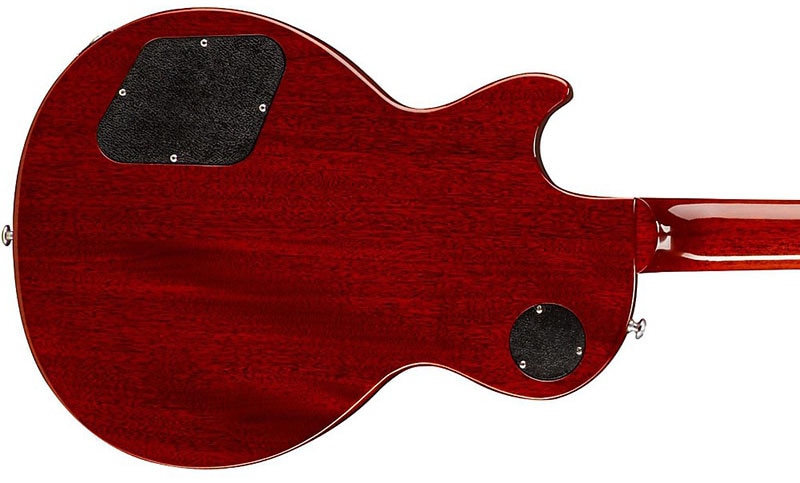
The Gibson Les Paul Standard has a set neck that produces its legendary sustain
Neck-through guitars feature a (usually laminated) neck that, unsurprisingly, extends through the entire length of the body, with ‘wings’ or ‘fins’ glued onto the sides of the body. This gives even more stability to the neck and even more sustain and resonance when played. Neck repairs are, again more difficult and costly. However, the increase in stability means these repairs are much less likely to be needed.

Tonewoods
Since a guitar’s sound is primarily determined by the interaction of the strings vibrating and the magnets in the pickup, you might wonder why wood makes a difference. In fact, the wood has a significant effect on the way a guitar sounds. The resonance from the wood determines how long the strings vibrate and the shape of their motion. Wood also allows the pickup itself to move. This combination makes wood an important factor in the overall tone of the guitar.
Mahogany is a very dense, strong wood used in all parts of guitar manufacture except fretboards and bridges, which require harder wood. A mahogany neck and back are often found on short-scale guitars with maple tops. Another common combination is an all-mahogany body and neck (excluding the fretboard). Because mahogany is not very hard, it emphasizes the midrange and bass frequencies for a mellower guitar tone. Mahogany is a very resonant wood which enhances a guitar's sustain. It is generally a uniform rich brown color.
Maple is the most common wood used to make guitar necks. It is very hard and dense, and often has attractively detailed grain patterns referred to as figuring. Maple also has a very bright overall tone. Due to it’s figuring and its tonal characteristics maple is often used for a veneer or top laminate on more expensive solid body guitars. It is also used as a top wood in some archtop guitars, where it is usually laminated. Its hardness brings out the trebles in a guitar's sound. It is also often used for the fretboard where it adds definition to the sound.
Rosewood is the most common wood used for electric guitar fretboards. It is very dense and hard and can be quite beautiful, ranging in color from almost black to variegated brown and blond. Rosewood is occasionally used in electric guitar bodies, but this makes the guitar quite heavy.
Ebony is a very hard, dense wood that is used primarily on fretboards of more expensive guitars. It has a silky feel and is usually almost entirely black.
Ash is a common body material in solid body guitars. It is harder than mahogany and very resonant. This gives the guitar ringing sustain and bright tone with a well-defined mid-range. A light colored wood with attractive grain figuring, it is often given a transparent finish. Swamp ash is a particularly appealing, detailed wood used on higher-end guitars.
Alder has tonal characteristics similar to ash, but is less costly and is not as highly figured. It is one of the most common body woods on solid body electric guitars. It is usually light tan in color, although it’s often covered with an opaque finish.
Agathis is similar to alder in appearance and tonal characteristics, though not quite as resonant. It is commonly found on newer, more affordable guitars.
Nato is also known as Eastern mahogany, and offers a warm resonance. Nato is very strong, and is most often used in the necks of less expensive electric guitars due to it’s cost effectiveness.-->{C}





































































































































